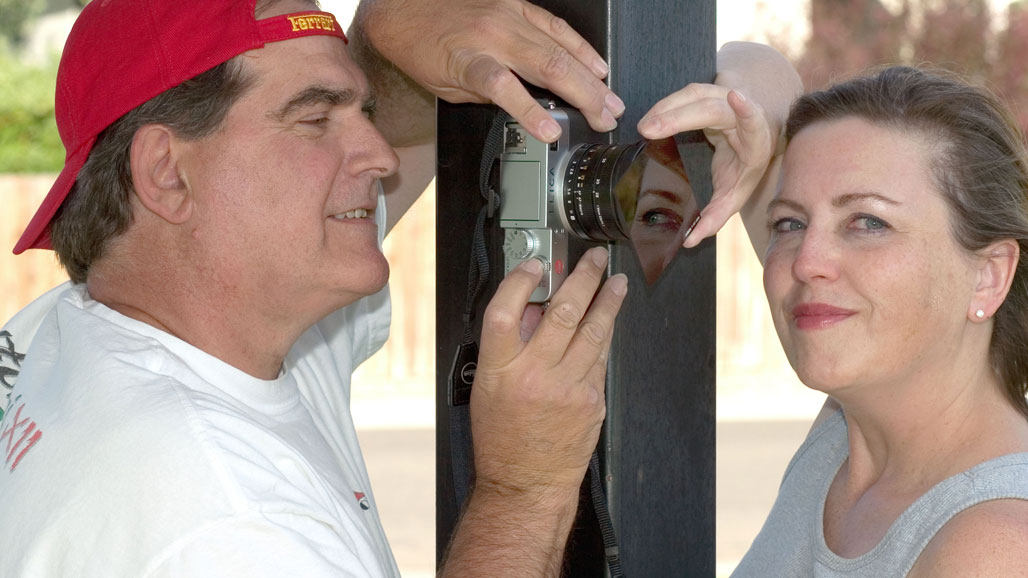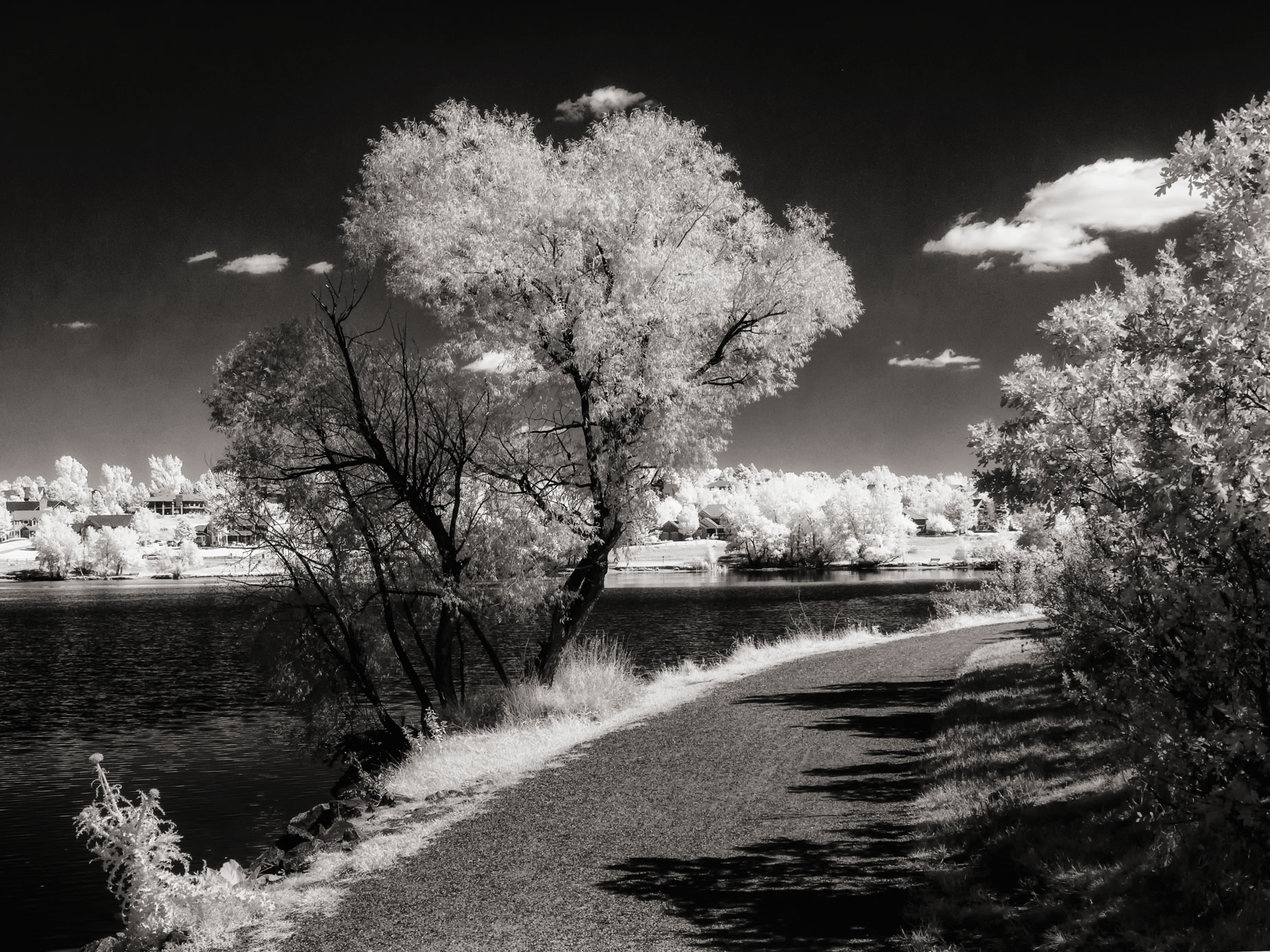Today’s Post by Joe Farace
Infrared is a type of radiant energy that is invisible to the eyes; we can only feel it in the form of heat. All objects in the universe emit some level of IR radiation. Sun and fire are among the most obvious source of infrared radiation.—byjus.com
 I’m often asked: How do I get started in infrared photography?” Well, there are lots of ways that you can shoot infrared photographs: You can capture infrared images with (almost) any camera by placing an on-lens filter like Hoya’s R72 Infrared like Mary and I are tag teaming a Cokin 007 filter onto a Leica Digilux 1.
I’m often asked: How do I get started in infrared photography?” Well, there are lots of ways that you can shoot infrared photographs: You can capture infrared images with (almost) any camera by placing an on-lens filter like Hoya’s R72 Infrared like Mary and I are tag teaming a Cokin 007 filter onto a Leica Digilux 1.
Or You Can…
…choose to have one of your existing cameras converted for infrared-only capture by companies such as Life Pixel. There are many other such companies but I’ve found that Life Pixel does a great job with IR conversions. They’ve done most of the conversions for some of my Canon DSLRs and all of my Panasonic Lumix G-series cameras. This is not a paid or sponsored endorsement, just my experience.
For my mirrorless infrared photography, that’s the option I chose and had my old Panasonic Lumix G5 converted using the company’s Standard IR (720nm) conversion. (for more on nanometers, you might want to read this post. LifePixel had the camera in-house for seven working days and then shipped it back to me via UPS. I was excited when it arrived and immediately put a Lumix G Vario 14-42mm 3.5-5.6 kit lens on the camera and walked to nearby Bingham Lake to recreate the an IR image that I had originally made using a filter.

How I made this photograph: For the image above, I used a Panasonic Lumix G5 made with the Lumix G Vario 14-42mm 3.5-5.6 kit lens. The camera was converted to infrared capture by Life Pixel using their Standard IR conversion. The handheld exposure was 1/400 sec at f/9 and ISO 400. The RAW file was converted to black and white using Silver Efex, toned using the Platinum toning filter in PhotoKit 2 and then had a third layer using the Glamour Glow filter from Color Efex to give it a bit of digital infrared glow.
To be fair, there are upsides and downside to choosing either method. Using filters is less expensive and the resulting long exposures sometimes create really interesting-looking cloud shapes. But you need a tripod for the long exposures that using these highly dense filters will produce. Converting your camera for IR capture is more expensive and afterwards it can then only be used for infrared photography. But you will get handheld shutter speeds giving you lots of freedom of movement and composition.
The lower ISO settings that are possible with a converted camera tend to produce a crisp, less noisy image. When capturing images with either filters or an IR-converted cameras, I typically shoot in RAW+JPEG mode, with the JPEG file set in Monochrome mode so I can get a preview on the LCD screen of what the final image .will look like. (This is not possible with some conversions, such as Life Pixel’s Hyper Color filter*, as you can in this post. Then I process the RAW file, typically with Silver Efex, into the finished monochrome photograph to maximize image quality. That’s my workflow but you may choose another approach, whichever work best for you.
*Life Pixel does not give a nanometer rating for the Hyper Color filter as it does for it’s other filters such as their Standard IR filter which is a 720nm filter that’s equivalent to Hoya R72 Filter/ Kodak Wratten 89b Filter
